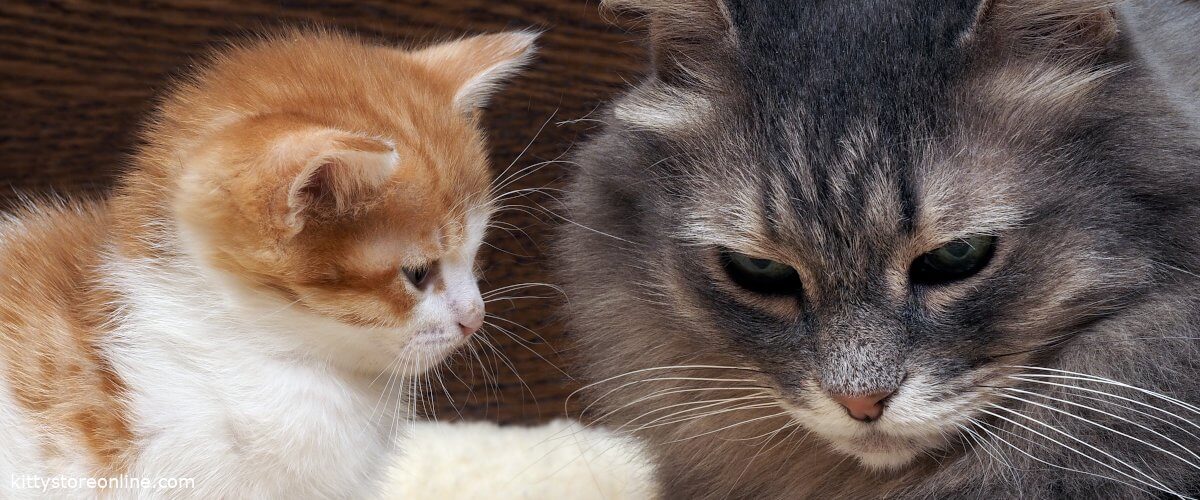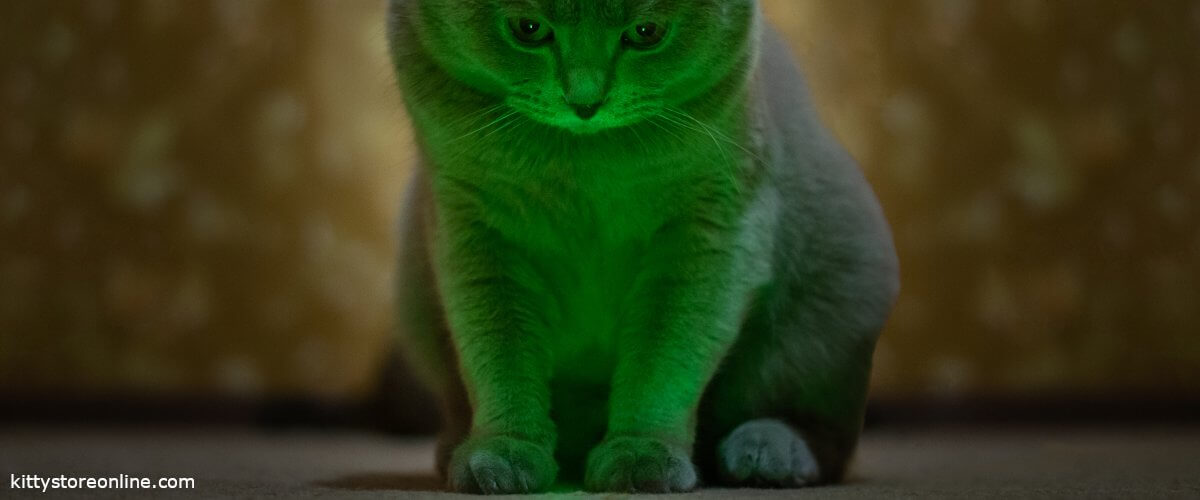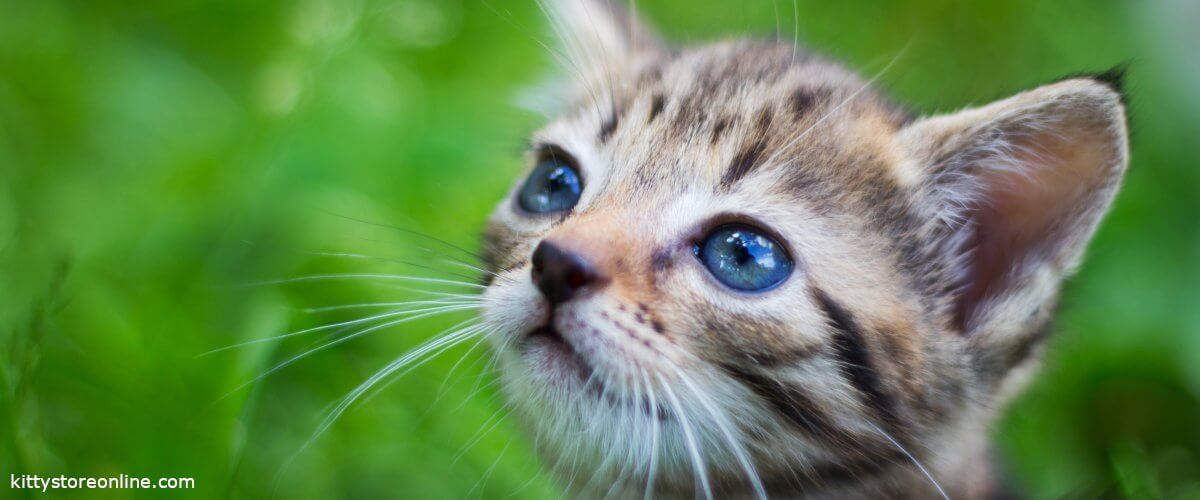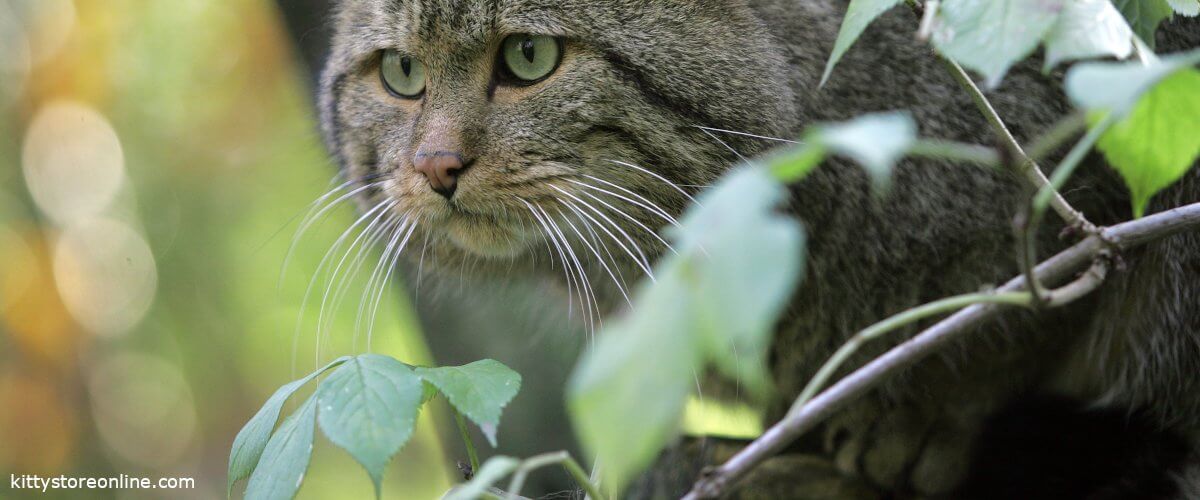Educating the cat
Can a cat be trained? Many say no, because cats are much more independent than dogs and have their own head. But clear rules are essential for people and cats to live together. Through their fine senses, cats also sense whether their actions are pleasing or displeasing to their human at the moment. Nevertheless, cats will not refrain from scratching, for example, because they have the need to sharpen their claws. It is innate. Therefore, in order to direct the scratching behavior into regular channels, it helps to acquire a scratching post, scratching cardboard or a scratching board, so that the cat gets off furniture and wallpaper. As you can see, cats can be educated by carefully directing their needs in the right directions and positively reinforcing correct behavior.

Basics of cat training
Positive reinforcement and consistent adherence to rules once established are the fundamentals of successful cat training. Importantly, all family members must participate for cat training to be a success. While dogs can remember several commands, it is worthwhile to memorize a single word for the cat, which is said over and over again in the same tone of voice when an unwanted action occurs. This can be the word “No” or it can be “Don’t do that,” “Fie,” or something similar. Not, however, the name of the cat. She should associate her name with something positive. You do not have to shout when training cats, because cats have excellent hearing. The important thing is that you say the word immediately when the unwanted behavior starts, so that the cat knows that it is doing something wrong. You can also pick the cat up and put it down in another place, for example, on the scratching post. Initial learning should occur after a few days.
Wanted behavior, on the other hand, is rewarded with treats and lots of petting. Cats remember this and will repeat the desired behavior because they like it. If cat training does not show success, educational tools may help.
- If you blow your cat in the face during undesirable behavior, it reminds them of the hissing, with which cats reprimand each other.
- The use of water: cats are water-shy, so you may use water well dosed even during undesirable behavior. The cat will not suffer permanent damage or a soul dilemma from it. Dose the water sparingly with a water gun or water sprayer. If the water spray is repeated each time the unwanted action is performed, the cat will associate it with each other. However, never aim for the head or ears, so that the cat does not suffer any health damage.

Clicker training cat
A special measure in cat training is clicker training anlog the clicker training of a dog. In clicker training, a click means a treat. Familiarize the cat with the clicker first before you start clicker training. Clicker training not only rewards desired behaviors, but also starts Cat Agility. That fitness training for the cat works against boredom and keeps the cat healthy. With a lot of patience, the cat can even cross an obstacle course at the end with the prospect of a treat. The cat sport is also a suitable means to keep the cat busy.
Educating kittens
For the kitten to be socialized, it should live with its mother cat for 12-13 weeks. Here it learns how to clean itself properly, how to eat from the food bowl or how to use the litter box. It trains its movements in the play with the brothers and sisters and it learns first disciplinary measures.
As with adult cats, in the kitten’s upbringing, positive behavior is rewarded and negative behavior is met with a word like “no” or “fie.” The time window is only one to two seconds after the positive or negative behaviors. Also praise the kitten if it stops what it is doing because of their intervention. If not, put it in another place.
Educating kittens and cats to proper scratching behavior
Scratching and biting is innate in cats. Biting is part of the cat’s hunting instinct. So if she snaps at your fingers, stop it with the command for unwanted behavior. If the kitten scratches furniture and wallpaper, you can spray them with mint oil. Cats do not like the smell of mint at all. Put the cat in the allowed scratching spot, scratching post or scratching post every time he scratches.

Cat acclimation
Just as humans have to acclimate to a foreign environment, so do cats. Even transportation from the shelter or breeder is pure stress for the cat. She will not let herself be touched at first. So it is best to leave the cat alone in a quiet room with food, water, a place to sleep and a clean litter box. You can choose to leave them in the room, but with fearful cats it will take several hours for them to venture out of the carrier. Open only the door of the cat carrier. If the cat feels safe, it will come out on its own and explore the surroundings. Get the newcomer in the cat room used to your voice and the smell first, before the cat gets to know the other family members. If the cat approaches to sniff, you should let this happen without touching or picking up the cat. Once the cat has explored the cat room extensively, the door may be opened for further exploration. Bowls and litter box can now be placed in the designated area.
The cat will now explore and climb every corner and every room exactly. Already here you can set the first rules, where the cat is not allowed to stay. The moderation can be done by blowing on it. The sound resembles the hissing of cats. The cat must get used not only to the new environment, but also to the new people. Therefore, in the first days, if possible, take a vacation and sit in the same room. If you talk to the cat more often, it will recognize you by your voice. Loud noises frighten the velvet paw. Treats can ensure that the cat lets itself be touched. Avoid scented hand cream, as cats are sensitive to odors.
Getting kittens used to the litter box
To start with, buy a litter box where the kitten can get in and out by itself. Use cat litter that the kitten already knows and choose a quiet place for the litter box. Put the kitten in the litter box and praise it when it has done its business in it.
The cat doesn’t eat
If the cat refuses to eat on the first day in the new environment, there is nothing wrong if she drinks anyway. She may be more likely to eat at night when everything is quiet. It is helpful in the first time to use the same food as in the shelter or at the breeder. Always offer the cat wet food and dry food. If the cat is very skittish, you can place the food bowls near its hiding place. If the cat does not eat for a long time, a veterinarian should be consulted. If the cat has diarrhea due to a change in food, you can add some healing clay to the food.
Matching cats
The socialization of multiple cats is always an experiment and is inevitably defined by rank wars. This is a natural process and should not be stopped. If the territorial fights are accompanied by injuries, you should physically separate the cats and only when they have calmed down, start the next attempt at socialization. Do not give the first cat a reason to be jealous of the new one and do not neglect the older cat. You can recognize jealousy in cats by the following behaviors:
- The cat withdraws or becomes aggressive.
- The cat refuses food.
- The cat suddenly becomes unclean.
Each cat needs its own cat toys, litter box and a scratching post, as well as its own food and water bowls in separate feeding places. For grooming, use separate brushes for each cat.

How long does it take to get cats used to each other?
The more similar the character of the two cats, the faster the socialization. Even cats of approximately the same age can be brought together well. Always, however, the established cat must accept the addition to its territory. With normal cats the socialization takes up to three weeks. If the first cat has always lived alone and considers other cats as intruders, it can take months until both cats accept each other. If there are rank fights and scuffles from the beginning or if the cats are not interested in each other, the cats will probably never get used to each other.
Tips and tricks
Let both cats sniff each other through the door gap first. The paw should fit through the door gap, but the head should not. If curiosity is positively underpinned, you can move on to the second step. For this you need a second person. One person each now holds a cat on their lap. The cats can now observe each other. If the cats react aggressively, separate the cats again. Try the second step again and again until the cats get used to each other. In step three, go a little further. Feed the cats first and then take the first cat onto your lap. Put the new cat in an elevated spot so it doesn’t feel threatened. Depending on behavior, extend togetherness longer and longer. Within four weeks, friendship or enmity should have emerged between the two cats. Young cats can be brought together better than established single cats.
When the cat marks
With urine a cat marks its territory. A natural process, therefore, which does not bother us at the garden fence, but in the apartment is an annoying evil. But why does the cat mark in the house, although far and wide no other cat is to be seen?
Various causes when the cat marks
Urine is a means of communication in cats. The male cat uses it to mark his territory. This can be the feeding place or the retreat where he does not tolerate other cats. Unneutered male cats often also mark as a sign of reproductive readiness, to attract other cats’ attention. Marking can also occur out of stress or when the cat is unsure of itself, when it is upset or angry. The behavior affects not only unneutered males, but also neutered males and spayed cats. Such situations arise, for example, during a move, a new carpet, or a new variety of cat food.
Difference cat marked and unclean
Unclean behavior may be related to the litter box. Perhaps the litter box is in an awkward location or the new cat litter is not comfortable. The amount of urine is also less when marking than when unclean. Cats often squat when urinating. Marking, on the other hand, is done while standing, so urine first runs down the wall or other vertical surfaces before reaching the floor. Marking also favors wooden objects such as table or chair legs, door frames, and doors.
This almost eliminates highlighting altogether
Make sure your cat is comfortable. Punishing it for marking can only cause more stress in the cat. Give the cat more attention and more time when it asks for it. Special scent diffusers for the outlet spray pheromones that signal the cat that everything is okay. The stress level lowers. Refrain from changes in cat litter and food. Provide species-appropriate cat activity and change the food from a few large single-serving meals to allowing the cat to eat small snacks more frequently, just as in nature.
What else you can do
Cats are actually clean animals. Odorless cleaners without chlorine or ammonia are recommended for grooming. Cats may try to mask the scent, which is unpleasant to them, by marking. If sex hormones trigger the behavior, consider neutering. You will need staying power to stop the unloved behavior, especially if it has been going on for some time. If your cat does not stop marking despite all countermeasures, you should seek advice from a veterinarian or a cat psychologist.

Cat education with the laser pointer
Cats love to catch the little bouncing dot of a laser pointer. The laser pointer with its moving dot of light awakens a cat’s hunting instinct.
Pros and cons of a laser pointer for the cat
If you want to supplement your cat’s toys, you can try a laser pointer. The light is simply impossible to grab with your paws, and in the cat’s perception, the small dot even flickers, which makes it look quite lively. However, the game should be stopped before frustration gets ready, because the light dot cannot be chased as prey, nor does it appeal to senses of smell and touch. Therefore, not all cats are enthusiastic about the game with the laser pointer. Provide a treat at the end as a hunting success, so that the cat’s attention does not flag, or point the laser pointer at the end at an object that the cat can hunt down.
Be careful when handling laser pointers
Laser pointers were not originally invented as toys. Improper handling can be dangerous for cat eyes but also for human eyes. Cat eyes absorb light stimuli much more strongly than the human eye. Therefore, the laser pointer should never be pointed at the cat’s face or at reflective surfaces that additionally reflect the light. Class 1 laser pointers are suitable for cats. Children should not play with the cat and the laser pointer.

Do cats go through puberty?
Yes, cats do enter puberty. Females a little earlier, males a little later. In females, the production of sex hormones starts from the third month of life. Between the 6th and the 9th month, cats are sexually mature. Male cats reach puberty at around five months of age. Males are fertile at around one year of age. Thus, puberty in cats lasts half a year. Long-haired cats become sexually mature later than short-haired breeds. Oriental cat breeds become sexually mature earlier.
How does puberty manifest itself in cats?
Impulsive behavior characterizes puberty in cats. This includes relapses into childlike behavior patterns. Cats do not experience a growth spurt during puberty. Rather, as with a teenager, the mood can change from a cuddly cat to a house cat, or there is gloomy staring out the window. Cats may not be up for action during puberty and turn a deaf ear when you call the cat. Another characteristic of puberty is daredevil climbing, because cats overestimate themselves during puberty.
How can I support my cat through puberty?
Fidgety cats can regain their composure with catnip and cat pheromones.
The Rollover
The sex hormones make cats ready to mate. They may roll on the floor mewing during puberty and become pushily cuddly. Male cats mark their territory with foul-smelling pheromones to impress the ladies. Especially for outdoor cats you should think about neutering/sterilization now. Male cats will otherwise set off for miles over dangerous roads to compete with other male cats. Not only can they get lost, but there is a risk of infection with cat diseases if the male cat is injured in fights. In female cats, sterilization prevents unwanted offspring. Cats also set scent marks that attract males over several miles, making your property a stomping ground for mating males. Without sterilization, cats will be in heat every month during the summer – a tremendous stress for the otherwise well-adjusted velvet paw. At the vet, neutering/sterilization is a routine procedure and is done under general anesthesia.
Allow cats free access

Accustoming cats to outdoor access
A new cat should be acclimated in the house for at least two weeks before the first outdoor access is granted. Fearful cats will take even longer. A good sign is if the cat is already waiting impatiently at the front door to get outside. Accustom cats to outdoor access: If the cat puts up with it, the first outdoor walk is done with a harness and leash. This prevents the cat from running away if it is frightened by the unfamiliar surroundings. Without a harness, leave the front door open so the cat can come back if it wants to. A rural area or adjacent park is less dangerous for outdoor cats than busy streets. However, outdoor cats may be shot by hunters outside a set distance in rural areas. The cat will leave its property when free-roaming. Neighbors can claim damages if the cat does something wrong, and measures to block cats from trees and gutters are also allowed by law.
Requirements for open access
- Vaccinations against rabies, feline rhinotracheitis, feline epidemic diarrhea, FIP, and leucosis
- Fleeces against fleas and ticks
- Free-roaming cats should be neutered
- A chip with registration or a tattoo will confirm you as the owner if the cat is ever lost
Don’t let the cat outside during bird nesting season, keep it indoors. Give an outdoor cat less food in the morning and move the main meal to the evening. This way, you will entice your cat back home in the evening with the call of its name and the clatter of the food bowl. Cats should always spend the night at home.
Alternative cat flap
The cat flap is recommended if you want the cat to get out and in independently. For glass doors, you will need to hire a glazier to install the cat flap. With wooden doors, you can install an opening for the cat flap yourself. Modern cat flaps offer a lot of additional functions such as time-controlled opening and denial of access for foreign cats or that the cat can only get into the house in the evening, but not out. The cat must now be gradually accustomed to the use of the cat flap. First lure your cat through the opening by giving it a treat. If the cat goes through the opening, close the cat flap a little further each time until the cat understands the function.